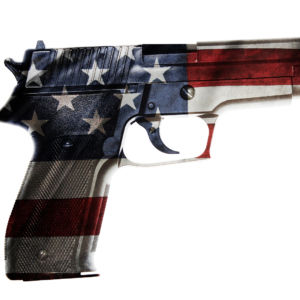The National Rifle Association spends a lot of money trying to influence political campaigns every cycle, but contrary to what many liberals claim, Republican in Congress are not beholden to the NRA cash cow.
Every time a mass shooting occurs and gun control legislation is introduced (but doesn’t get passed), Republicans are blamed for being bought by the NRA.
The 2016 Democratic nominee for President, Hillary Clinton, claimed in the past that the Republican controlled Congress does “whatever they are told to do” by the NRA and the gun lobby. Sen. Dianne Feinstein, D-Calif., said after the San Bernardino Shooting in 2015 that Congress “has a problem — a debilitating fear of upsetting the gun lobby.”
Both the New York Times and the Washington Post had reports explaining how much money the NRA has given to Republican representatives. “Since 1998, the National Rifle Association has donated $3,533,294 to current members of Congress,” the Post reported in its 2016 analysis of NRA donations.
Rolling Stone magazine even wrote an article titled “One Big Reason the Latest Gun Bills Failed: Gun-rights groups have in recent years given much more money to sympathetic politicians than gun-control advocates have.” Comedian Jimmy Kimmel went so far as to say that the NRA had the GOP’s “balls in a money clip.”
Many opinion pages have been filled with claims that the NRA has bought Republicans with their campaign funding and therefore suppressed the popular will and interfered with democracy in the process.
Don’t be mistaken, the NRA has significant influence over American politics, from its grassroots organizing, to its closely followed ratings (of those endorsed by the NRA, 80 percent won, according to the Washington Post’s analysis a few years ago), all the way to its well-oiled lobbying machine.
However contrary to what many think, the NRA doesn’t have a chokehold over the Republican Party due to spending on candidates.
In reality, both guns and gun rights sell themselves. There’s evidence time and time again that every time a mass shooting occurs, people decide to buy more guns, not less, and stockpile for safety — the rationale largely being to protect themselves from future violence (good guy with a gun vs bad guy with a gun) and very importantly to protect their ability to own a gun in case stricter gun regulations exist in the future.
Now whether a good guy with a gun is actually effective at preventing gun deaths or whether the fear of guns getting taken away is legitimate or not is another argument all together. The point is people feel the urge to buy guns after mass shootings. The demand for firearms is alive and well, regardless of NRA spending on individual congressmen.
Leaders like former President Barack Obama suggesting changes in gun laws in the aftermath of gun massacres fueled fears of gun regulation occurring and prompted the NRA to rally its members to fight against potential new regulations during the Obama administration
Therefore gun sales soared, and so did donations. Donations in the 2014 election cycle were up by more than 50 percent compared to the prior two years, and nearly doubled from a decade ago, according to CNN.
CNN reported that contributions to the NRA came from nearly 30,000 donors, with around 90 percent of donations made by people who gave less than $200 in a single year. According to the NRA, the average donation is around $35, which shows that thousands of everyday Americans fuel the NRA and much of its spending.
One could make an argument that the NRA’s total outside spending of $54 million in 2016, according to the Center for Responsive Politics (CRP), could influence people to buy guns and encourage their representatives to vote one way or another — but dissecting exactly where that $54 million goes is not easy. Buying politicians is and always has been a sincere concern in a democratic society, but the NRA is far from the biggest player right now (a single liberal super PAC, Priorities USA, spent $191 million).
As commentator Jonah Goldberg said in a column in the Chicago Tribune, “The simple reality is that the NRA doesn’t need to spend a lot of money convincing politicians to protect gun rights. All it needs to do is spend a little money clarifying that a great many of those politicians’ constituents care deeply about gun rights.”
The Pew Research Center reports that four out of 10 Americans have a gun in their household, and 73 percent of gun owners say they can’t imagine not owning a gun. 25 percent of gun owners say having a gun is very important to their overall identity.
Guns are a divisive, emotionally-charged issue that people get passionate about on their own and communicate their opinions to their representatives. Whether we agree with their opinions or with the outcomes of their opinions, Republican representatives voting for gun rights and stifling gun control legislation is often a direct byproduct of democracy in action — listening to constituents, even when Republican representatives themselves are harmed by gun violence.
To put the NRA’s spending in context to gun control groups in the 2016 election cycle, gun control groups accounted for $3 million in outside spending versus $54.3 million from the NRA.
Gun control groups are a tiny fish in the pond in comparison to the NRA, they’ve given $4.2 million in political contributions since 1989; 96 percent of their contributions to parties and candidates have gone to Democrats. However, they did unleash $8.6 million in outside spending during the 2014 election cycle, nine times as much as they spent during the 2010 and 2012 cycles combined, according to CRP data. Americans for Responsible Solutions, founded by former Rep. Gabby Giffords, D-Ariz., and her husband, Mark Kelly, was behind $8.2 million of those independent expenditures.

